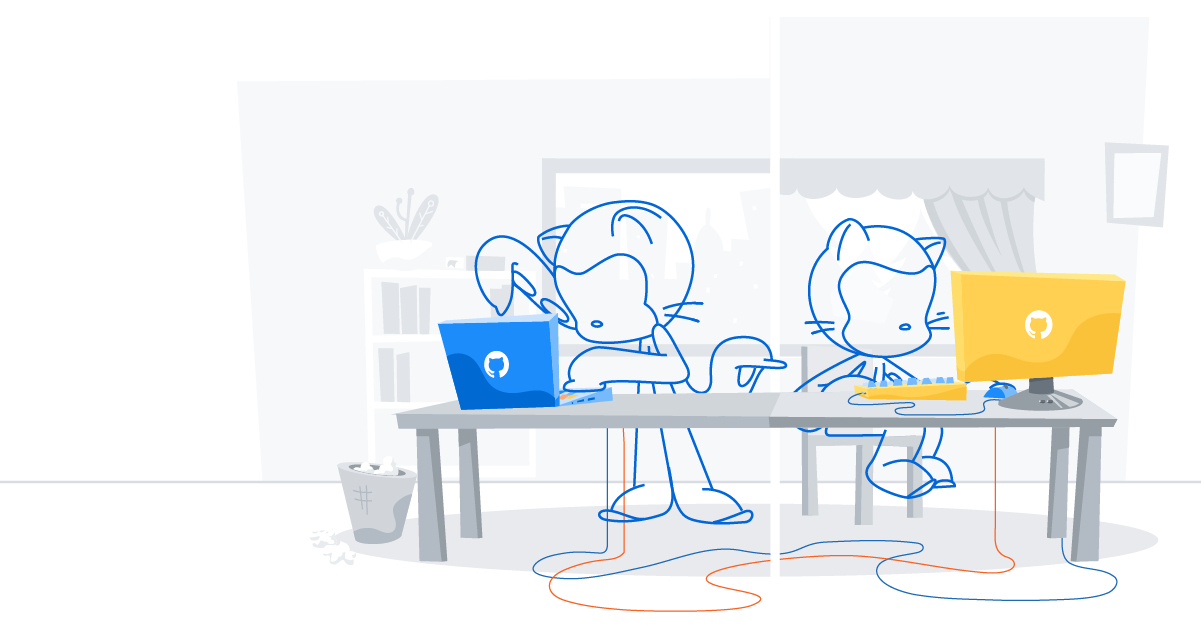Remote work: A series of best practices for a remote workplace
GitHub shares best practices for making remote work part of your company culture.

The development of open source software has been distributed from the beginning. There are over one hundred million open source projects in the world. On average, more than 74 thousand community contributors make contributions to the world’s most popular repositories on GitHub. GitHub was founded on making a developer’s job easier with open and asynchronous communication, and it’s become the world’s most popular platform for developers to collaborate on open source projects from anywhere. The teams at GitHub mirror our community—we collaborate on building GitHub from all corners of the world because it’s important that our team is just like our community.
Now, the impact of the COVID-19 virus has shifted our view on working from almost anywhere (largely our homes right now) and virtual collaboration.
As a developer-oriented company that’s so largely distributed, all teams within GitHub have learned some of the finer nuances of successful remote collaboration. We recognize this isn’t always typical for functions such as human resources, finance, legal, marketing, and sales and that many of you may be working remote for the first time. With this in mind, we’re kicking off a new series to share best practices for managing remote business in specific functions.
First up is Kem Boggs, Head of Global Talent Acquisition at GitHub. Kem has helped hire hundreds of Hubbers and created some of our most successful employee programs as we’ve scaled to become the home for millions of developers.
What do you feel makes the GitHub culture so unique?
We’ve been progressive in remote working for over a decade, which serves us well given all the changes happening at the moment. We’re a highly distributed workforce and focus on making sure that our employee experience doesn’t change regardless of location. To accomplish this, our employee benefits programs offer extensive support for remote working to match what an employee in an office would experience. This lets employees work and live almost anywhere in the world.
We also put a lot of focus on collaboration and strong communications. By using tools like GitHub, Slack, and Zoom, everyone can interact and engage across the company. We emphasize how to communicate on these platforms in onboarding so employees aren’t lost or confused, and we trade and collect best practices in GitHub repositories. We also record every internal event and share it immediately so people can watch it on their schedule or time zone. During those events, we use chat for live questions, comments, and camaraderie.
Speaking from my own experience as a remote employee, I’ve never felt lonely at GitHub. This is fascinating to me, since often the biggest downside of working remotely is said to be loneliness. The clear communication channels and processes we have, and a focus on “finding your people” through hobby (woodworking, anyone?) and lifestyle (cat or dog preference?) channels to connect to colleagues with the same interests, keeps our employees constantly engaged, valued, and contributing.
Another element of fostering a remote workforce is making sure that our employees can grow their career regardless of location. You need to be comfortable with everyone—from executives to managers to individual contributors—not being in one location.
Is there anything about the GitHub culture that you typically share with prospective Hubbers and new hires?
Feeling included is a big part of being successful as a distributed workforce, which is why we hold a diversity and inclusion interview with every external hire, at every level—a truly distinctive aspect of our interview process. We have an unbiased person (not on the hiring team) discuss their individual experiences with inclusive environments. There aren’t any wrong answers, and it helps to set the expectation for our culture of acceptance and diversity.
Can you explain how and why GitHub created the recruiting and employee programs that we have in place and how they may have changed over time?
Our programs have definitely evolved over time. When I started here four years ago, we were four hundred employees and now we expect to be over two thousand by July 2020. That’s a massive change, so naturally a lot of our programs have been reviewed. We try to focus on making sure that they work for all employees, are systematic, and without inherent discrimination. The biggest mistake a company can make is to establish remote working programs based on one location and expect them to work around the world. You need to think holistically by considering policies, practices, and resources in countries outside of the US so employees are supported wherever they’re located. Examples include arranging support through coworking spaces, and providing the resources to set up a home office are a few examples to start. This has been key for us and is especially important during our COVID-19 pandemic.
What’s your final bit of advice for companies implementing distributed workforce programs for the first time?
Be intentional from day one about making sure that people have a way to feel a sense of belonging and connection to the company and its community, regardless of where they’re working. You can also easily showcase your commitment to remote work to employment candidates with virtual interviews. A truly remote-friendly environment gives people the chance to work for their dream company, and your dream employees to work for you, without the barriers of location.
Want to learn more about best practices for working remotely? Check back next week as we continue our series to help you make the most of working in a remote environment from our next interview.
Tags:
Written by
Related posts

Your stack, your rules: Introducing custom agents in GitHub Copilot for observability, IaC, and security
Use partner-built Copilot agents to debug, secure, and automate engineering workflows across your terminal, editor, and github.com.

The ultimate gift guide for the developer in your life
Finding the perfect gift for your favorite developer is easy with our top tips.

Why developers still flock to Python: Guido van Rossum on readability, AI, and the future of programming
Discover how Python changed developer culture—and see why it keeps evolving.